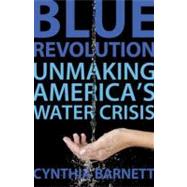
Note: Supplemental materials are not guaranteed with Rental or Used book purchases.
Purchase Benefits
What is included with this book?
| The Illusion of Water Abundance | p. 1 |
| Reclamation to Restoration | p. 25 |
| The Netherlands: Deluge, Dams, and the Dutch Miracle | p. 45 |
| Powerful Thirst | p. 63 |
| Taproot of the Crisis | p. 81 |
| The Water-Industrial Complex | p. 103 |
| Singapore: Of Songbirds and Sewage | p. 121 |
| The Big Dipper | p. 139 |
| The Business of Blue | p. 157 |
| Australia: Dry Down Under | p. 173 |
| An American Water Ethic | p. 193 |
| Local Water | p. 217 |
| Acknowledgments | p. 231 |
| Notes | p. 237 |
| Index | p. 269 |
| Table of Contents provided by Ingram. All Rights Reserved. |
The New copy of this book will include any supplemental materials advertised. Please check the title of the book to determine if it should include any access cards, study guides, lab manuals, CDs, etc.
The Used, Rental and eBook copies of this book are not guaranteed to include any supplemental materials. Typically, only the book itself is included. This is true even if the title states it includes any access cards, study guides, lab manuals, CDs, etc.